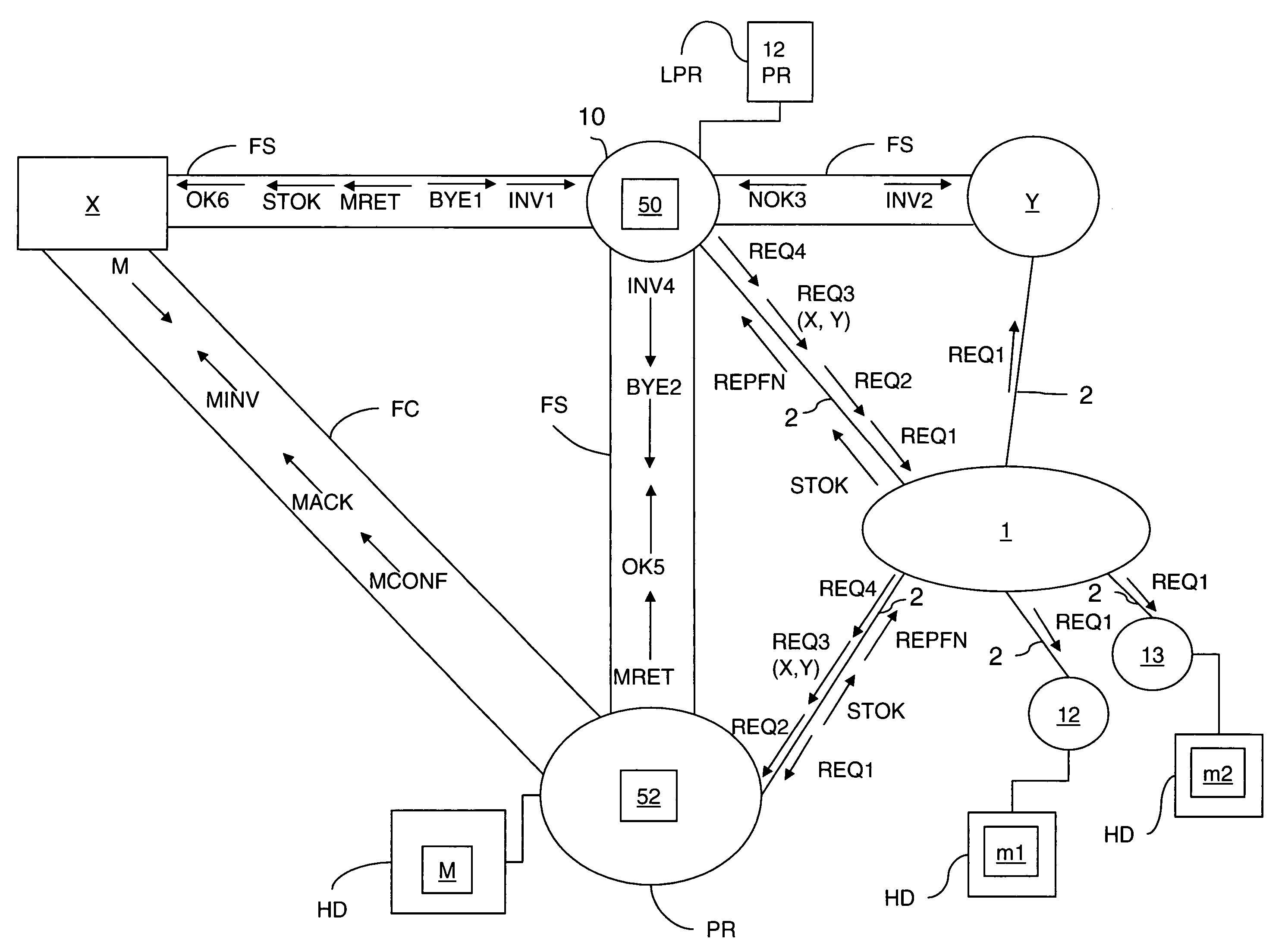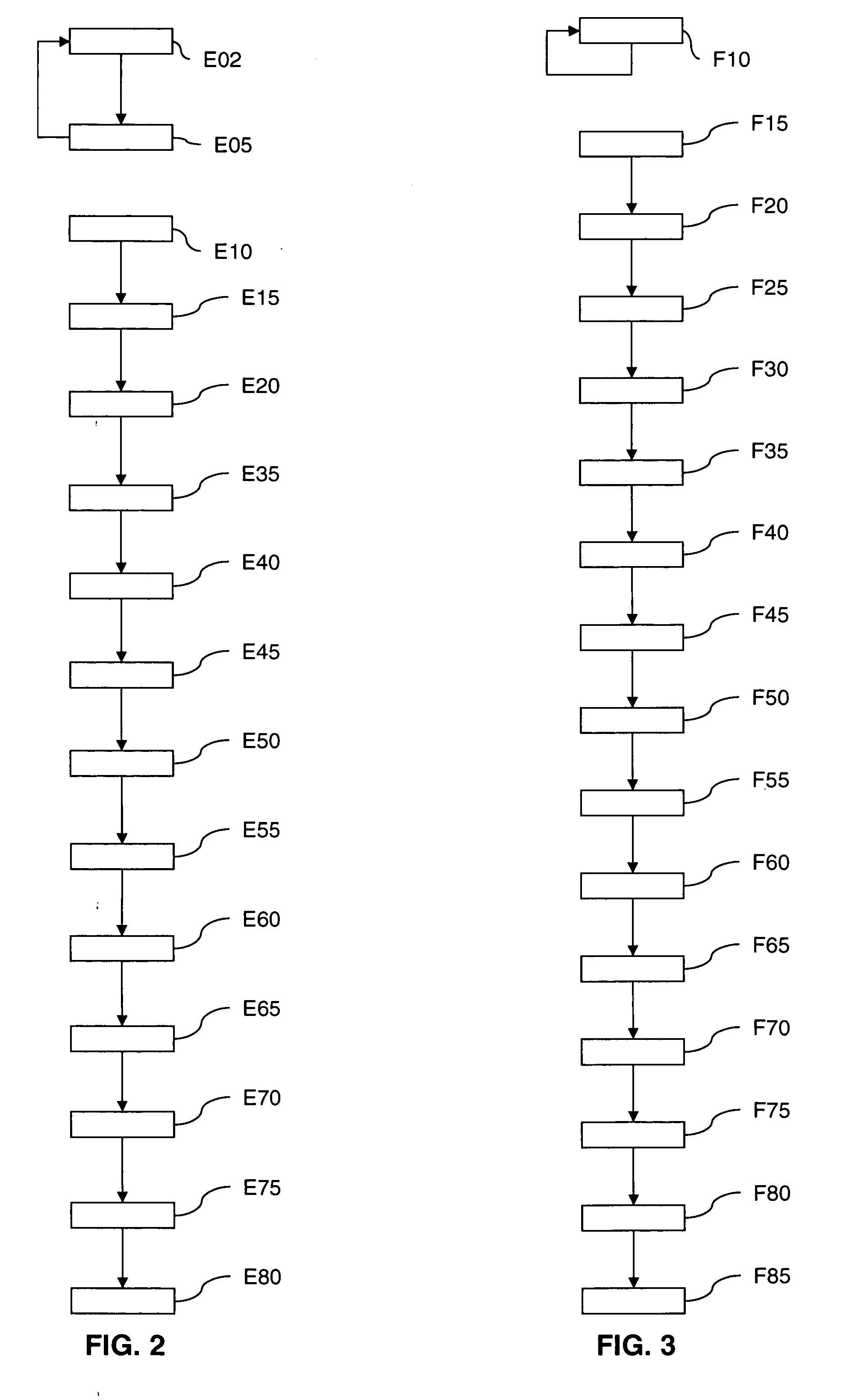Method for Managing Messages In a Peer-To-Peer Network
- Summary
- Abstract
- Description
- Claims
- Application Information
AI Technical Summary
Benefits of technology
Problems solved by technology
Method used
Image
Examples
Embodiment Construction
[0104]FIG. 1 shows a peer-to-peer network 1 to which peer devices 10, PR, Y, 12, and 13 are connected.
[0105]In this figure, the equipment units represented by circles or ovals are peer devices. They are connected to the peer-to-peer network 1 by connections 2.
[0106]Each of these peer devices is typically a computer, and for clarity their known processing means (CPU, ROM, RAM, etc.) are not shown.
[0107]This figure shows the storage means HD (for example hard disks) of the peer devices PR, 12, and 13.
[0108]This example assumes that the peer device 12 and the peer device PR are adapted to implement a message storage method according to the invention.
[0109]These devices therefore include a storage medium 52 (for example a memory) which stores a computer program PG2 including instructions for executing the steps of the storage method of which FIG. 3 is a flowchart.
[0110]Assume now that the device X, which is referred to as the “depositor”, is seeking to send a message M to the device Y, ...
PUM
 Login to View More
Login to View More Abstract
Description
Claims
Application Information
 Login to View More
Login to View More - R&D
- Intellectual Property
- Life Sciences
- Materials
- Tech Scout
- Unparalleled Data Quality
- Higher Quality Content
- 60% Fewer Hallucinations
Browse by: Latest US Patents, China's latest patents, Technical Efficacy Thesaurus, Application Domain, Technology Topic, Popular Technical Reports.
© 2025 PatSnap. All rights reserved.Legal|Privacy policy|Modern Slavery Act Transparency Statement|Sitemap|About US| Contact US: help@patsnap.com



